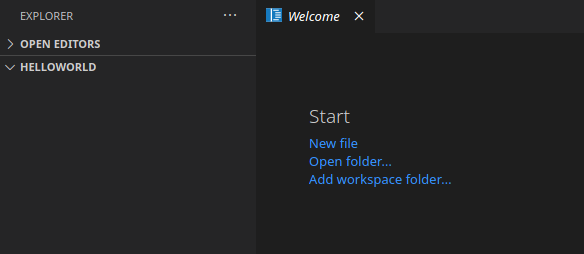Visual Studio Code Editor aka VS Code editor is one of the favorite code editor of programmers. If you are using Linux & learning any programming language then VS code editor is the best for you. Its is lightweight, fast, best in GUI and of course it has an opensource version also. We love opensource right!
So today we will see how to install VS code editor properly and how to configure it for C/C++ programming environment.
Lets Start...
Download : You can download the VS code editor for official site for most popular Linux distro . It is official available for Debian/Ubuntu(.deb) , Redhat/Fedora/CentOS(rpm), OpenSUSE/SLE , Arch base distros. It is also available via SNAP package manager. However installation can be done manually by downloading the .deb or .rpm packages from official site.
Below are the commands to install the VS code opensource (VS-OSS) editor in different Linux distros.
Debian/Ubuntu :
RPM Base Distro :
openSUSE & SLE base distributions
The yum repository above also works for openSUSE and SLE-based systems, the following script will install the key and repository:
Arch Base Distros: VS code editor is available via official AUR repository. You have choices to install the VS code editor either opensource or Microsoft official package.
1) For opensource run command as below:
pamac install code
Select option 1 for bash auto completion and give your root password to install the package and dependencies
2) There is an another open source community driven version available for Arch based system. run below command to install the package.
pamac build vscodium-bin
Press N for default build configuration then press Y to install the package.
3) For Microsoft Official build run below command
pamac build visual-studio-code-bin
pamac buil visual-studio-insider #for testing updates
Snap package: VS code editor is also available via snap repository if your system has snap package support then you can install it via snap command.
Configuring VS code editor for C/C++
#include <iostream>
int main()
{
std::cout << "Hello World!";
return 0;
}
9) Now from the main menu bar click terminal > configure default build task option and search for
C/C++: g++ build active file option and select it. This will create a tasks.json file in a .vscode folder and open it in the editor.
10) Now select your helloworld.cpp file and press shift+ctrl+b or click terminal > run the build task option in order to build your fiile.
A new terminal windows will open below side the VS code editor. Select the + icon right side below in the VS code editor and type ls command , you will see the executable helloworld file without any extension.
Debugging: In order to debug , you must check the gdb utility should have install in your system. verify the gdb utility with gdb --veriosn command from terminal.
1) From the main menu, choose Run > Add Configuration... and then choose C++ (GDB/LLDB) & click on g++ build and debug active file .
2) A launch.json file will execute and open in editor.
3) Now press F5 button or click on run > start debugging option.
4) It will start debugging and you will see the output in the terminal below side in editor.
5) VS Code is now configured to use gcc on Linux. The configuration applies to the current workspace.
Reuse C++ Configuration Files : To reuse the configuration, just copy the
JSON files to a .vscode folder in a new project folder (workspace) and change the names of the source file(s) and executable as needed.
For advance configuration visit the official page
Share your experience related to VS code editor in comment section.
Please share the post with your friends 😀






















0 Comments